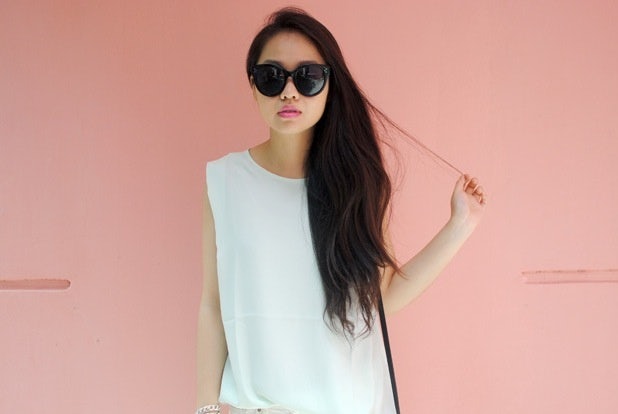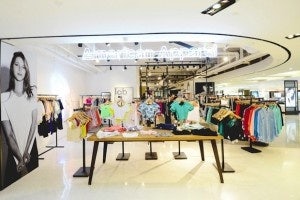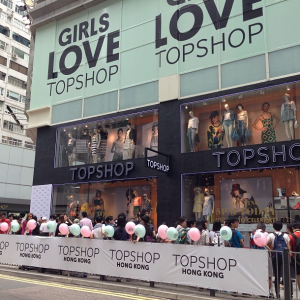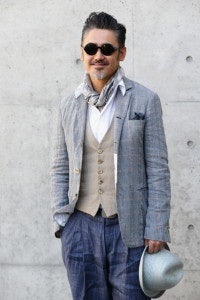
Shanghai-based fashion blogger Meijia S. (Meijia S)
Chinese consumers’ growing fashion sophistication is now a well-documented phenomenon: in first-tier Beijing and Shanghai, ostentatious, logo-heavy designs are on the way out, while smaller niche labels such as Stella McCartney, Marchesa, Rag & Bone, and Proenza Schouler have been making headway with China’s fashion elites through runway events, parties, and a rising retail presence.
Another important undercurrent in China’s style scene that is deeply connected to this trend, yet less reported upon in English media, is a developing focus on “mix-and-match” style: a looser, more inventive combination of high-end, designer pieces and items purchased at China’s burgeoning number of “fast fashion” locations such as H&M, Zara, or Topshop. Although this formula is no stranger to mainland fashionistas, it carries new weight as Chinese consumers become more focused on individuality and sophistication, and as the rapid middle-class expansion makes room for more mid-range options in the marketplace.
Two tiers of customer are targeted in this fashion movement: affluent shoppers focused on designer labels, who are being instructed to make their style choices more aesthetically unique, and a growing contingent of middle-class consumers who purchase most of their wardrobes from comparatively inexpensive locations and invest in a few key designer pieces.
“If you still tend to wear upscale brands such as Chanel, Gucci, or LV from head to toe, it simply shows that you are wealthy, a little old-fashioned, perhaps gaudy, and nothing more,” declares a Chinese-language editorial entitled, “Does Spending Money Buy Style?” in the April issue of Chinese fashion magazine U+ Weekly (You Jia Hua Bao), which roughly corresponds to Glamour or Marie Claire in the United States. “This is definitely not the right way to go if you want to show some fashion taste,” it continues. “’Mix and match’ is the new norm: mix Chanel with Gap, Gucci with H&M, or Lanvin with Topshop. This is the creative, smart way to fashionably survive in an age of chaos.”

American Apparel’s new LAB Concept-partnered location in Hong Kong. The brand also has two stores each in Beijing and Shanghai. (Fashiononymous)
Because the price point of foreign labels is higher in China than elsewhere due to tariffs, fast-fashion brands tend to market their clothes to a more upscale client base than in Europe or the United States. For more affluent shoppers, the pressure to “mix and match” plays into growing efforts to seek out individuality through style choices, which is in turn connected to the waning popularity of splashy logos. In a recent interview with Jing Daily, American Apparel China marketing manager Olivia Mok stated that, thanks to high import taxes in China, the store’s “main consumer tends to be someone with high disposable income, who is well-educated, and usually well-traveled,” and that Chinese consumers have “evolved from wearing head-to-toe designer clothing to mixing and matching luxury with moderate or budget labels.”
Nonetheless, high-spending individuals are not the only ones driving the huge influx of fast fashion brands into China. A recent McKinsey report projected that China’s upper middle class, or those making from RMB106,000 ($16,000) to RMB229,000 ($34,000) a year, are going to balloon from 14 percent to 54 percent of all urban households by 2022, and from 20 percent to 56 percent of all urban private consumption, compared to an increase from 11 percent to 25 percent of private consumption for the affluent class during this same time period. It’s no surprise, then, that labels such as Topshop, Zara, H&M, and Japanese and South Korean brands are moving into the mainland market or expanding rapidly.

Topshop's Hong Kong store opening.
In fact, fast fashion expansion is now faster than that of than luxury in China, according to a recent study by Ledbury Research. Topshop opened its first Hong Kong location this spring and has expressed plans to open mainland locations, Zara has more than 100 stores in 40 Chinese cities, and Gap plans to add 35 locations to their current 47. In addition, many Asian brands, including Chinese, Korean, and Japanese fast-fashion labels are competing with U.S. and European companies. Internationally known Japanese label Uniqlo will open its world’s largest flagship store in Shanghai in the fall, which will join its over 40 other locations in the city. According to a report by research firm CB Richard Ellis, fast fashion retail expansion is accelerating across both first- and second-tier cities.
Mid-range customers are especially interested in learning how to mix one or two designer pieces with a budget-friendly wardrobe. The U+ Weekly article warns its middle-range readers against becoming the type of wasteful, fast-fashion obsessed woman who piles up “clothes that have never been worn three times would create a stack twice the earth’s circumference,” and has no sense of how to invest in a high-quality item. As Bomoda.com CEO Brian Buchwald noted at a recent Fashion’s Collective talk, middle-class Chinese consumers are highly likely to save up for big-ticket items to add to their wardrobes, making high-low, mix-and-match features particularly popular with Bomoda readers. “The Chinese consumer will literally eat ramen noodles for six months to buy a $3,000 handbag,” he said, “and then the question is, how do they leverage that handbag in their daily life?”

Wu Xiubo at the Giorgio Armani show during Milan Menswear Fashion Week on June 25, 2013.
Assisting with this “education” about fast fashion options is a burgeoning group of opinion leaders which includes fashion bloggers and celebrities. A longstanding trend among U.S. and European fashion bloggers such as Rumi Neely of Fashion Toast, Chinese fashion bloggers are increasingly embracing the high-low aesthetic, such as Shanghai-based Meijia S and Hong Kong blogs such as The Style Voyager. In the celebrity sphere, actor Wu Xiubo, star of the Chinese blockbuster romantic comedy Finding Mr. Right, is especially known for his range of high and low labels. He recently made waves showing up at Milan Fashion Week wearing a stylish combination of Zara and Armani, and is also known to frequently wear H&M, Hugo Boss, and Dolce & Gabbana.
This growing trend is likely to benefit the bottom lines of both high and low brands hoping to cash in on the sheer number of future middle-class shoppers: although middle-class consumers will save up to invest in luxury products and increase overall sales volume, they will be more likely to view their Zara or H&M purchases as a unique part of their personal style rather than simply as a budget-friendly necessity.
(Jasmine Lu contributed to this report)